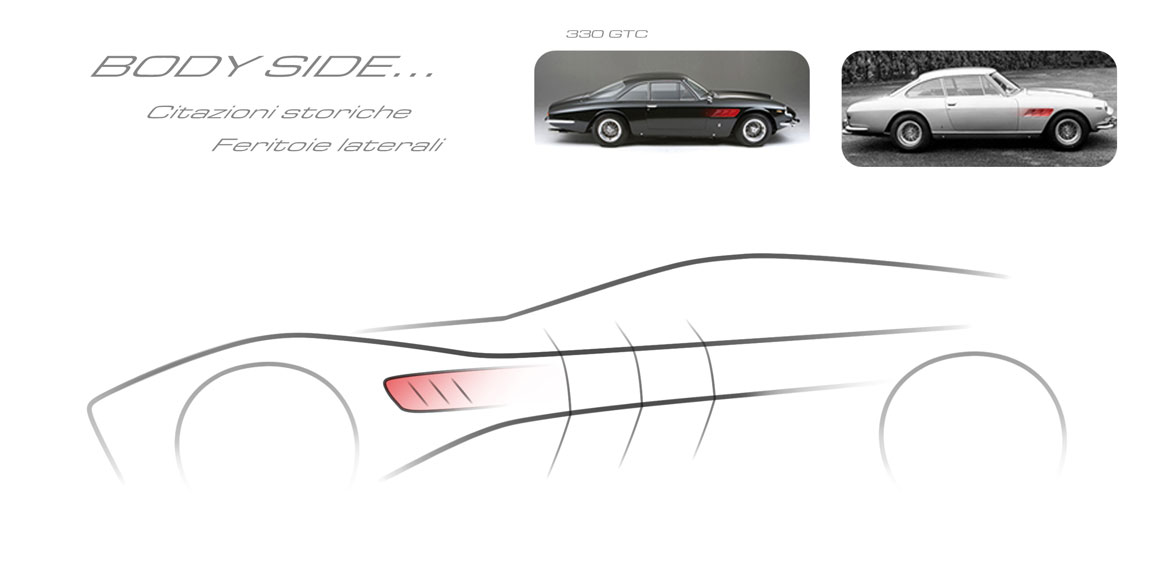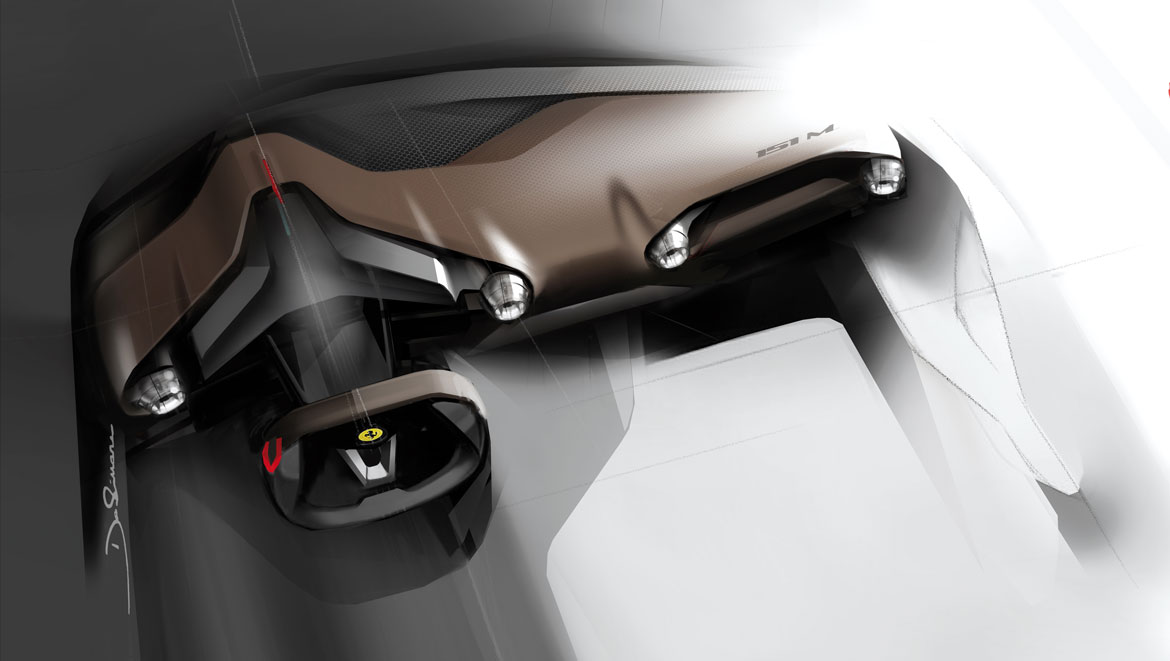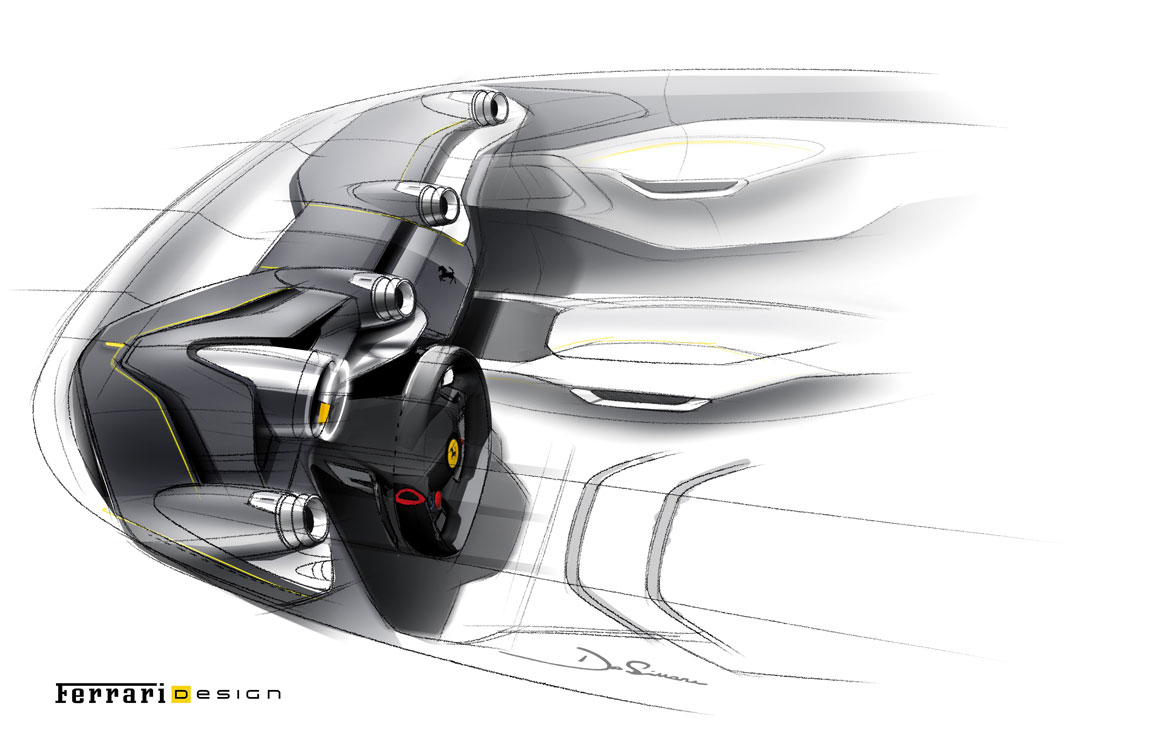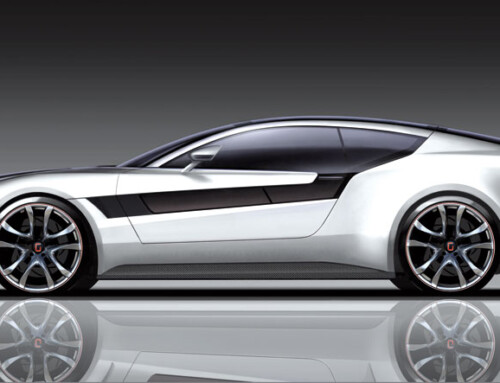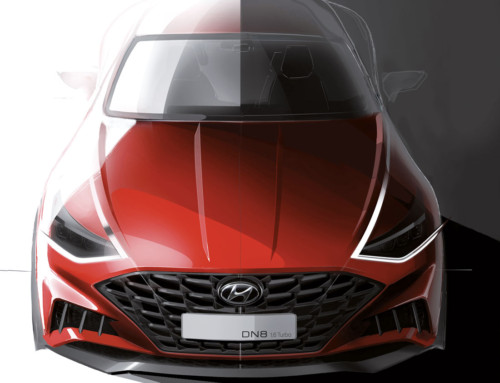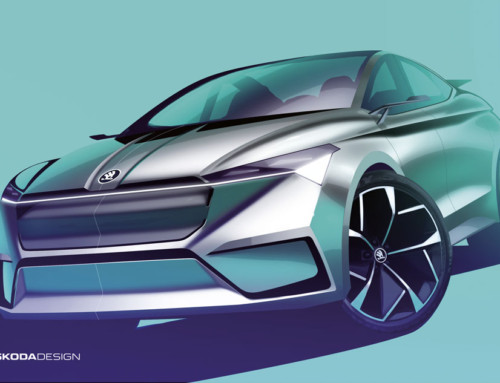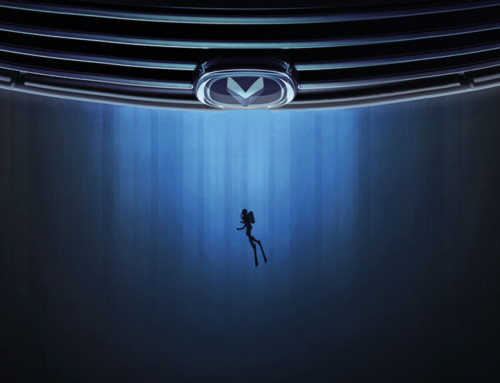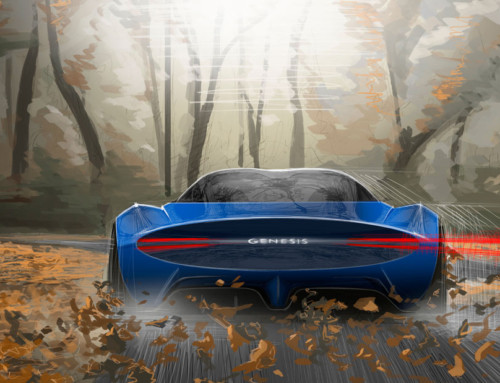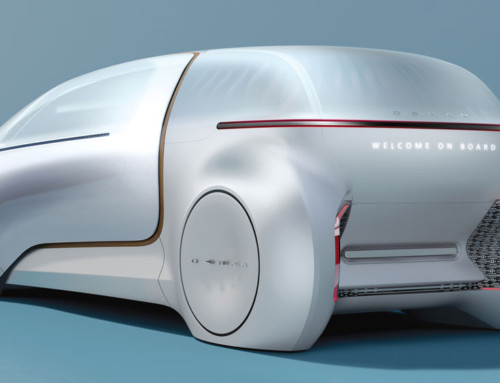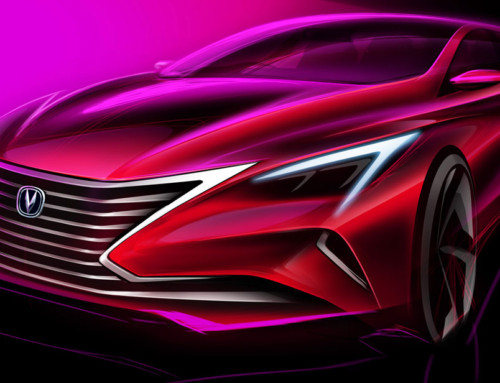When the first style meetings are held to define a new creation bearing the Prancing Horse badge, the focus is usually concentrated on performance-related content, such as the mechanical layout, aerodynamic requisites and dimensions of the package. “This time around, we had to start from a fundamental conceptual question” explains Ferrari design chief Flavio Manzoni.
“Specifically, we discussed if it was a good idea to keep the shooting brake body style for the successor to the FF.” This very question reveals the conundrum posed by the model: a car far removed from a classic berlinetta, deliberately different from other four-seater coupés and, above all, nothing like any offering from the overexploited crossover genre, Ferrari’s outsider is a fascinating but rather controversial concept.
“A solution to all of these questions came from an understanding that a fastback coupé, which was the ideal answer to our objectives for space, can be very dynamic if the rear volume is treated correctly. So with this in mind, my team and I were confident that we could create a genuine Ferrari, even with a body shape so far from Ferrari canons”.
The result has been named the GTC4Lusso, in deference to a concept which, while more opulent and polished than the marque’s past offerings, still offers razor sharp performance and a driving experience to match.
“It’s a Formula 1 in a dinner suit”, quips Manzoni, pointing to the matte fairing of the underfloor just peeking out from under the doors and reminiscent of the black carbon elements of a formula racer. The extraordinarily sophisticated treatment to minimise visual mass on this non-conformist four-seater sports car even extends to a number of barely perceptible details which, however, have a significant impact on the style. An example of this is the spoiler over the rear screen, which visually demarcates and flattens the tail even though the actual roofline is higher, ensuring that headroom for rear occupants is not compromised.
But underneath the undeniably clever visual details of the exterior, the character of the car was sculpted by structural choices. This is especially true in the tail, which adopts a trapezoid cross section taken from the legacy of the 308, with dual round taillights, in the evident step marking the shoulder that encircles the arched belt line, and also in the scalloped, pared-down flanks, which convey the solidity and visual lightness of a statue hewn from a marble block.
“To slim the shape, we introduced a ‘tuning fork’ motif that narrows in the door and lends movement to the surfaces. This movement is also accentuated by louvre flank vents inspired by the 330 GTC of 1966, which also draw attention to the front wheel” explains Manzoni. The result is a surface with a tension that seems alive and sinuously sculpted, but with many angles and corners giving it a much more contemporary look.
Full article in Auto&Design no. 219



















